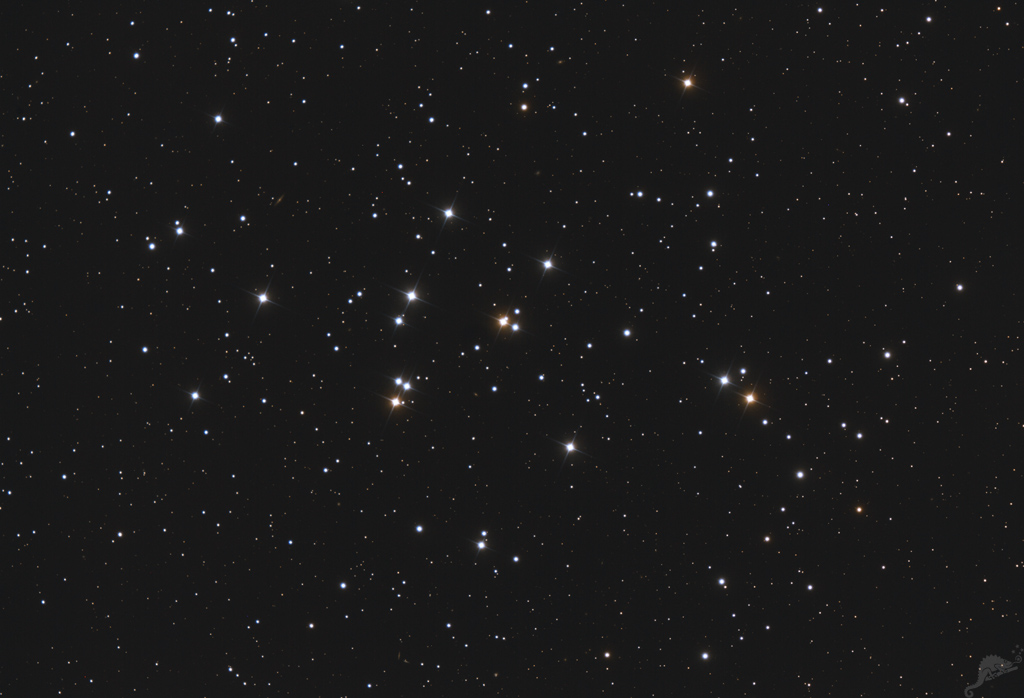 |
CHAMÄLEON + ONJALA OBSERVATORY DeepSky | SITEMAP HOME CHAMÄLEON |
|
 |
|||
| « back to overview Star Clusters | Load higher resolution (1800 x 1200 Pixel Pixel – 3000 x 2000 Pixel Pixel) | Object description |

 |
Object description: In the constellation Cancer there is the open star cluster Messier 44, which is also called Praesepe (lat. for crib). Other catalogue names are NGC 2632 and Melotte 88. It is the second brightest star cluster in the Messier catalogue after the Pleiades (Messier 45). Messier 44 contains over 300 stars of the brightness between 6 mag and 12 mag. The stars are physically and dynamically very similar to the stars of the Hyades, so that a common origin of both clusters is possible. Both clusters contain main sequence stars of spectral type A and cooler, which give an age of about 600 million years. « The image left shows a size comparison to the full moon. Click here or the thumbnail to load a larger version. |
| The
distance to the star cluster is about 570 light years, which was determined by
observations with the Hipparcos space. This is slightly larger than the
distance to the Hyades. The most massive stars of M 44 are located in the
centre of the cluster, which are spread over an area of about 15 light years.
The more than 1000 stars, which are gravitationally bound to the cluster, have
a total mass of about 500-600 solar masses. Due to its location far away from the galactic equator, some weak background galaxies can be seen next to the stars. In the middle at the lower edge of the image is the galaxy cluster Zwicky 1830, which includes about 100 galaxies. "Click here or on the thumbnail to load a large version. » Click here or the thumbnail to load a larger version. Messier 44 was certainly known since prehistoric times, first written descriptions can be dated to 260 BC. Messier 44 was one of the first deep sky objects that Galileo Galilei studied with his telescope in 1609. He was able to resolve 40 stars. He wrote: |
 |
Charles Messier added the Beehive Cluster to his catalogue on March 4, 1769, describing it as a "cluster of stars known by the name of the nebula in Cancer." In the first edition of the Messier catalogue, he noted: "cluster of stars known by the name of the nebula in Cancer." At simple view [with the naked eye], one sees in Cancer a considerable nebulosity: this is nothing but a cluster of many stars which one distinguishes very well with the help of telescopes, & these stars are mixed up at simple view because of their great proximity.
 |
 |
 |
 |
 |
 |
 |
| Sun | Moon | Solar System | DeepSky | Widefield | Miscellaneous | Spec. Projects |